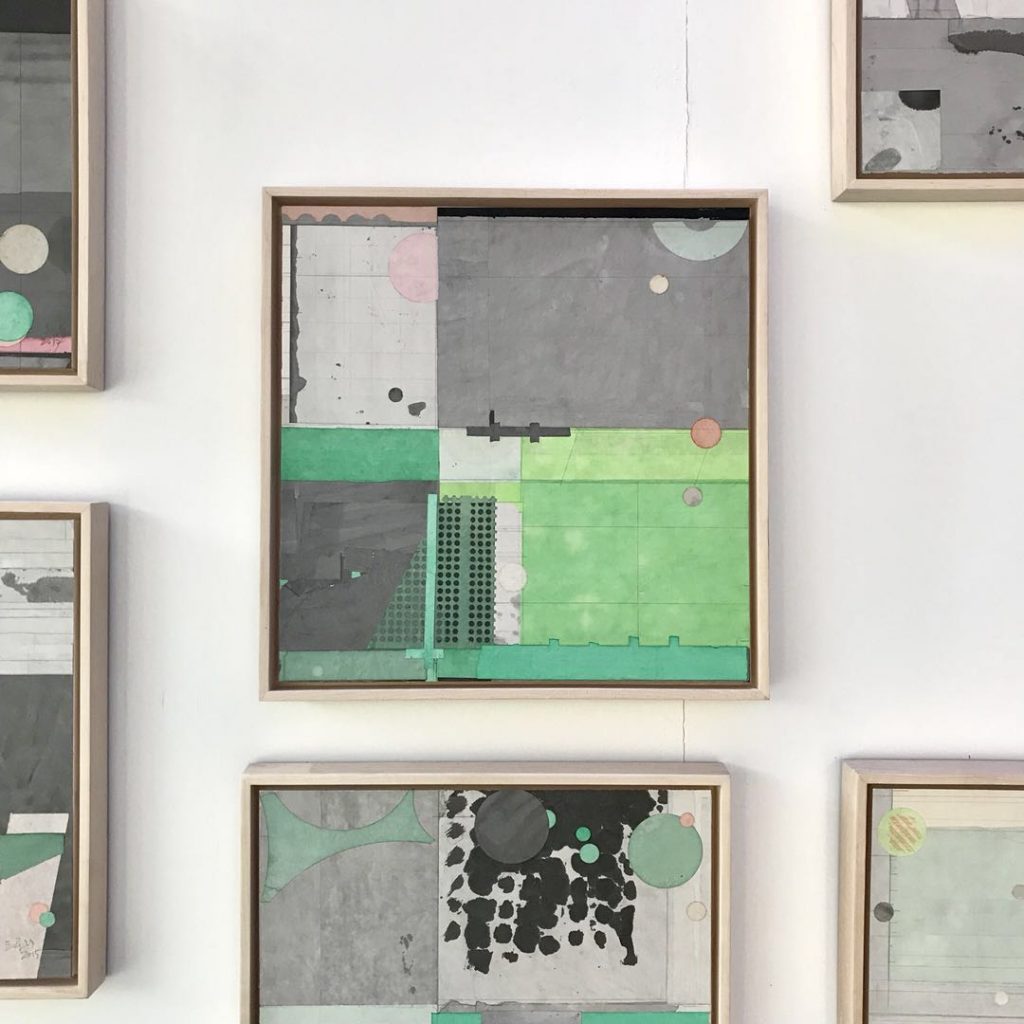

梁铨 | Quan Liang
Je fine art Gallery’s art world

1948年出生于上海,祖籍广东中山,1964年考入浙江美术学院(现中国美术学院)附中,1981年赴美国旧金山艺术学院学习版画,1984年进入浙江美术学院(现中国美术学院)版画系执教,1995年任深圳画院专职画师,现工作和生活于深圳。
宣纸条被梁铨井然有序地拼贴和排列在作品当中,并以色、墨平衡画面,架构出梁铨独特的美学倾向和精神气质。画面呈现了由毫无意义的细节堆砌而成的, 细致而又真实的“空”的世界。其中静谧的线条和几何图形只是各自存在那里,并无规律可循,却通过适当的排列方式彼此抵消注目度,组成为一个整体,形成了“丰富”和“空”的统一。十多年前梁铨的创作风格由年轻时期的面面俱到的“满”,逐渐转向对于“空”的追求。结合所学的抽象的现代主义表现手法,梁铨逐渐摸索出了一种以“实”来表现“空”的手法。梁铨没有亲身去过潇湘八景的生发地,因此有关潇湘八景的创作,均源自于他个人的理解。他的景与特定地域无关,而与特定时间下的氛围和艺术家心境有关。这是一个建构于历代文人心中永恒的文化意象,却又是一片可以四处移动的风景。在梁铨的作品中,那些无法亲临的古老风景,经过艺术家个人化的理解与转化,已不再是单纯的视觉经验,而是超越其上,具有了一种更普遍意义的内心景观。
Liang Quan’s abstract landscape is created with collaged Xuan Paper pieces and ink colors. The actual locality of his landscape is not relevant to the understanding of his picture. Instead, he is more concerned with presenting the world of “emptiness” which is a reflection of his inner world. The details on his paintings are not arranged according to any particular order rather they are pieced together to form a well-balanced world of “emptiness” without any single focal point. A decade ago, Liang began pursuing “emptiness” in his artistic expression and turned away from the “fullness” of his art during his earlier career. Because of that his landscape is shackled to being a mere depiction of an actual place but becomes a moveable place beyond the vision which only exists in the inner world of the imagination.

Leave a comment
还没有评论哦